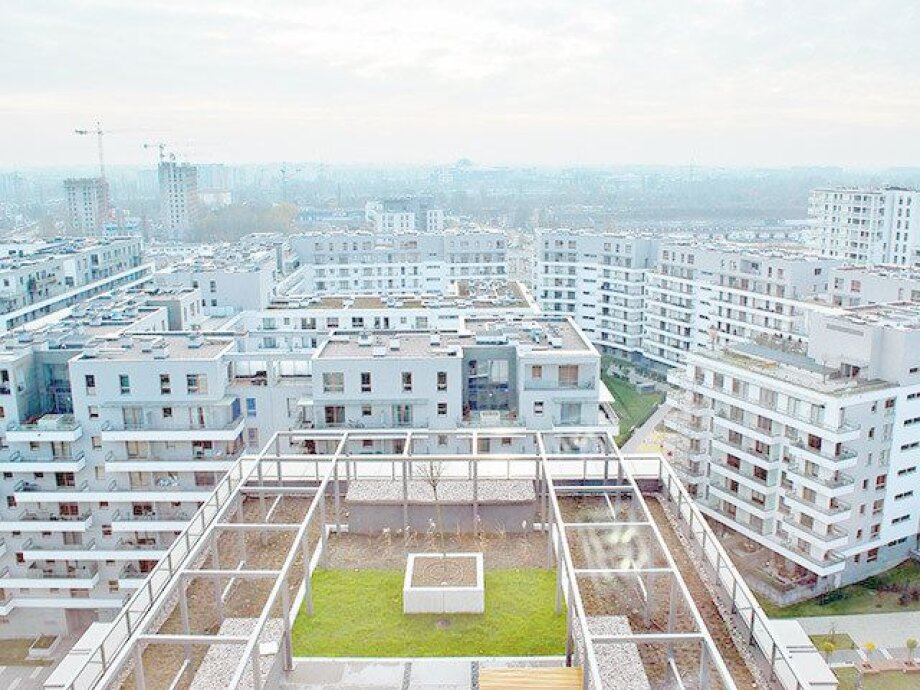Residential market overheating


Apartment prices are soaring at the highest rate since 2007. How long can the demand continue? Developers seem to be aware that the growth is bound to slow down, as they have already started curbing their construction plansBy Beata SochaThe residential market is in full swing. Apartment prices on the six biggest markets (Warsaw, Kraków, Wrocław, Łódź, the Tri-City and Poznań) increased by as much as 9 percent between April 2017 and April 2018, according to residential advisory firm REAS.
Interestingly, not all locations are seeing the same growth rates. “REAS data shows the weakest increase in Kraków by some 5 percent, and the highest in the Tri-City – by 16 percent,” said Katarzyna Kuniewicz, partner and head of market research at REAS.
In Warsaw, prices increased by an average of 6-7 percent, according to Robyg’s analysis. “The main reason for growth is the increasing prices for building materials and labor. Lower availability of land also contributes to it, as well as to the declining number of new apartments on sale,” explained Anna Wojciechowska, sales and marketing director at Robyg’s Gdańsk office.
This is the quickest price surge observed over the past decade. “Since the beginning of the current boom for residential properties, prices for new units increased by 17 percent, with the majority of the growth recorded over the past 12 months,” said Jarosław Jędrzyński, analyst at RynekPierwotny.pl. Jędrzyński also expects the upward pressure to continue until the end of 2018, “although it is difficult to estimate at what prices we will start seeing a sharp decline in demand.”
Kuniewicz is more optimistic in her forecasts: “The high construction and land costs as well as the consistently high demand for apartments indicate that in 2018 we will continue to see prices grow. In 2019, a slight tapering off can be expected and prices should stabilize at a relatively high level.” She does not expect the demand to waver at least until 2020. “Barring any cataclysm, apartment prices on the developer market will see some reductions only in 2020, mainly because of the demand wearing off.”OVER THE HUMPThe residential market has seen strong growth rates for years and developers have responded in kind. The supply continues to be high, though it seems to have reached its peak. “Currently there are nearly 47,000 units available in the markets analyzed and it is 6 percent lower compared to a year ago,” Jędrzyński stated. According to the National Statistics Office (GUS),44,908 apartments were delivered in Q1 2018, which is 10.6 percent more than in the first quarter of 2017. Developers accounted for 24,898 apartments over that period, which signifies a 12.1 percent increase. Though still impressive, growth rates seem to be weakening. Last year, the number of new units delivered increased by 13.4 percent in Q1 2017 compared to Q1 2016.
Similarly, the number of permits issued is increasing, although not as quickly as in 2017. In Q1 2018, authorities issued permits for the construction of 66,766 apartments (including tacit permits, where the investor simply files the architectural design and is allowed to launch construction unless the relevant authority interjects). This is 10.8 percent more than a year earlier. Meanwhile, the number of permits issued in Q1 2017 was as much as 42.8 percent higher y/y.CASH OR LOAN?The continually low interest rates and the relative volatility on the stock market have been fueling the residential market, with more people buying apartments as an investment. According to the National Bank of Poland (NBP),there was a slight decline in demand for mortgages in Q4 2017. Analysts explain that it corresponds to a growing number of cash purchases in the residential market.
“You can see this very clearly in the first quarter of 2018. If the trend continues, over a half of the apartments that are expected to be sold in 2018 will have been bought with cash,” confirmed Wojciechowska. As much as 60 percent of apartments acquired with cash are intended to be rented out, rather than to be lived in.
[negative]WARSAW – SUBWAY HYPE The completion of the central stretch of the second subway line in Warsaw in 2015 has had a major impact on the average price of apartments located within one kilometer of each of the stretch’s seven stops, according to a recent analysis by urban.one. Over the last five years, the average price of units located near the Świętokrzyska stop have gone up by as much as 63 percent. Admittedly, the impressive increase was also driven by the completion of two luxury residential towers – Cosmopolitan and Złota 44 – in the area. In the case of the Rondo ONZ, Stadion Narodowy, Rondo Daszyńskiego and Dworzec Wileński stops, the average prices rose by 24 percent, 19 percent, 15 percent and 15 percent respectively. “Time is one of the most valuable assets in Warsaw, so good transport links with other districts come at a price,” commented Barbara Bugaj, a senior analyst at urban.one.
[/negative]
The completion of the central stretch of the second subway line in Warsaw in 2015 has had a major impact on the average price of apartments located within one kilometer of each of the stretch’s seven stops, according to a recent analysis by urban.one. Over the last five years, the average price of units located near the Świętokrzyska stop have gone up by as much as 63 percent. Admittedly, the impressive increase was also driven by the completion of two luxury residential towers – Cosmopolitan and Złota 44 – in the area. In the case of the Rondo ONZ, Stadion Narodowy, Rondo Daszyńskiego and Dworzec Wileński stops, the average prices rose by 24 percent, 19 percent, 15 percent and 15 percent respectively. “Time is one of the most valuable assets in Warsaw, so good transport links with other districts come at a price,” commented Barbara Bugaj, a senior analyst at urban.one.
[/negative]